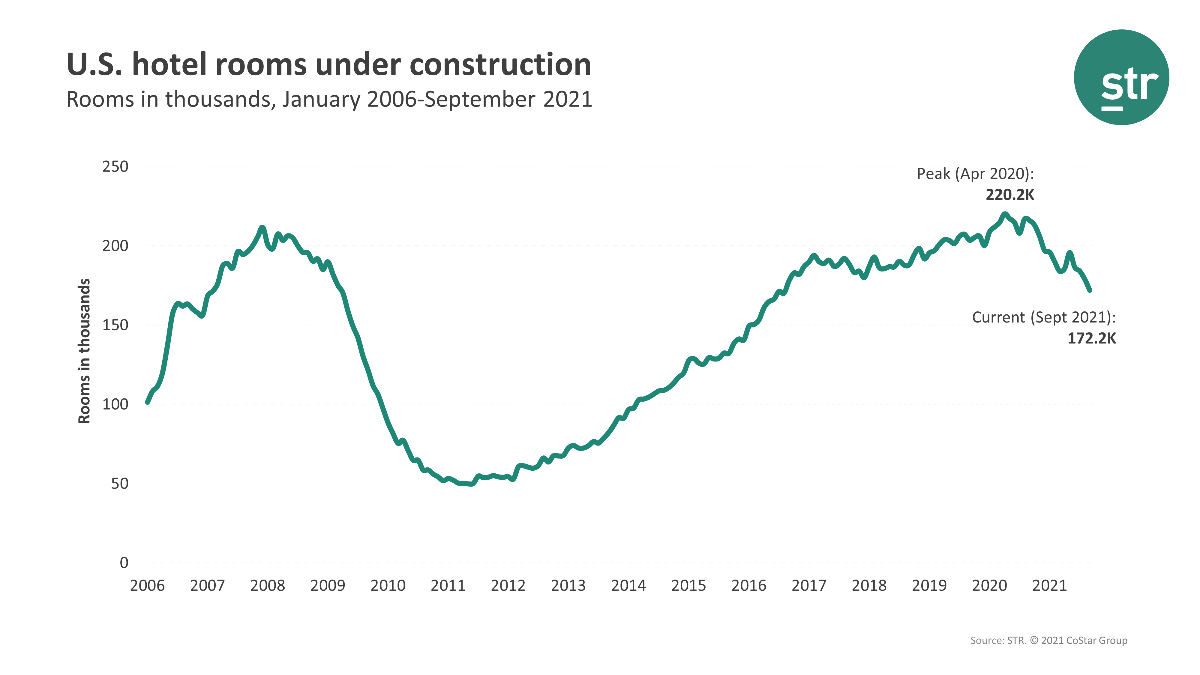
THE NUMBER OF rooms in the U.S. hotel pipeline dropped in September under pressure from the still lingering COVID-19 pandemic, according to STR. The year may still finish strong, however, and New York led the pipeline in number of rooms under construction.
Overall, the number of rooms in construction in the pipeline dropped by 48,000 during the month from the same time period last year. It was a 20.3 percent drop to end at 172,251 rooms in construction. The number of rooms in final planning, 205,829, was down 17.2 percent from last year and the number of rooms in planning, 263,673, was a 41.1 percent decline.
“The impacts of the pandemic and the associated financial bearings have reached the hotel development pipeline, as the number of rooms in the construction phase continues to decline,” said Alison Hoyt, STR’s senior director of consulting. “While part of the decrease has come from fewer rooms entering and moving through the pipeline, new openings that were delayed by the pandemic also account for some of the loss. For 2021 as a whole, we’re looking at a higher-than-average influx of new rooms, assuming properties with projected opening dates over the final months of the year open on time. It is more likely that at least some of the projects nearing completion will be delayed to 2022 openings.”
New York City, with 17,985 rooms in construction, was well ahead of the rest while only five other markets had more than 5,000 rooms in that final phase of the pipeline. They include:
- Atlanta (5,844 rooms)
- Los Angeles (5,839 rooms)
- Nashville (5,251 rooms)
- Las Vegas (5,195 rooms)
- Dallas (5,062 rooms)
“New York City remains positioned for a supply surge as we move deeper into the recovery timeline,” Hoyt said. “Demand has been improving in the market, but more supply from the final batch of pandemic reopenings as well as these new properties will continue to pressure occupancy levels. The return of business travel and groups was always going to be vital for New York City, but the urgency grows a bit when you throw more inventory into the equation.”
In August, Lodging Econometrics reported that the U.S. topped the global pipeline. The top markets and hotel companies also were U.S. based.




